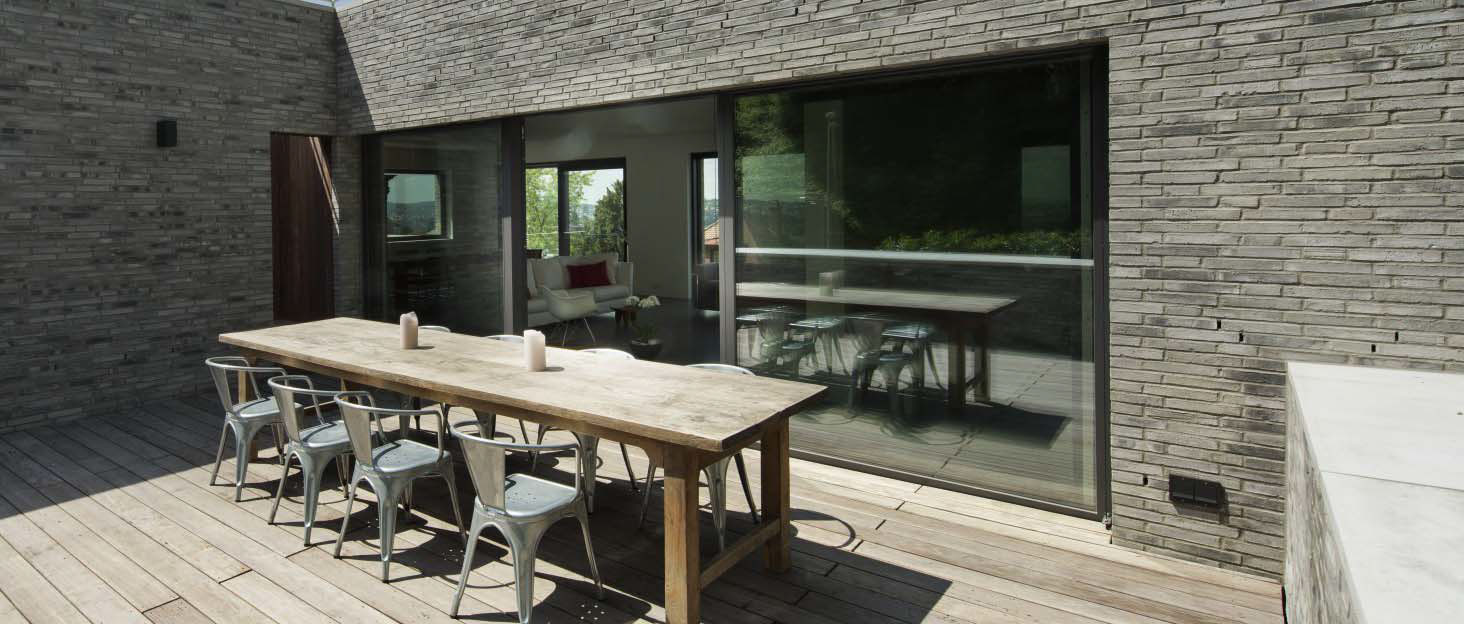THE ADVANTAGES
• Significantly reduced costs for heating and improved comfort
• Walls and windows remain constantly warm inside even in sub-zero temperatures
• No draft effects while sitting in front of the outer wall
• Controlled fresh air intake, extraction of stale air in kitchen and bathroom
• No condensate occurs on the windows
• Uniform temperature conditioning during day and night
• Huge windows on southern facades to use solar energy
• Comfortable temperatures by pre-cooling of the incoming fresh air
• Integrated dust filters in the ventilation system
• Heating energy consumption is significantly reduced, CO2 emissions correspondingly reduced
• Security: central ventilation, windows can be closed
• Heating energy is saved by using solar energy
We would be pleased to inform you about additional requirements and benefits related to the use of Rauh windows in a passive house during an individual appointment.
SYSTEM DESCRIPTION
The consequently developed and extraordinarily stable window frame and sash consists of laminated scantlings. The middle layers consist of cork foam and purenit. These materials insulated twice as good as wood, PUR hard foam insulates even four times better than wood. Purenit is insensitive to the effects of weathering and chemical substances. Purenit does not decompose, swell, decay nor mold. The multifunctional recycling product is produced free of CFC and HCFC.
Due to the multi-layer structure, the thermal insulation of the frame is substantially improved. The elevated glass fitting in conjunction with a thermally decoupled warm edge minimizes heat losses and avoid problems such as condensation and mold on the glass edge.
Thus this is ecologically valuable because of actively contributing to environmental protection.
COST-BENEFIT RELATION
Reduced costs
• No need of hot water heating (boilers, pipes, pumps, oil tanks, radiators, chimneys and installation)
• This will save you storage and living space.
Additional costs
• Improved thermal insulation in floor, wall and ceiling
• Installation of passive windows with their excellent insulating properties.
• Exhaust system which extracts heat from the exhaust air in order to heat the fresh air.
If you consider the requirements that come with the new EnEV, many of the above additional costs are necessary anyhow. It is the planning and design that determine whether this leads to reduced costs or additional costs when constructing a passive house. In any case, you will save heating energy in the longer run, so that a passive house does not cost more than a “normal” house with regard to the time of use.
